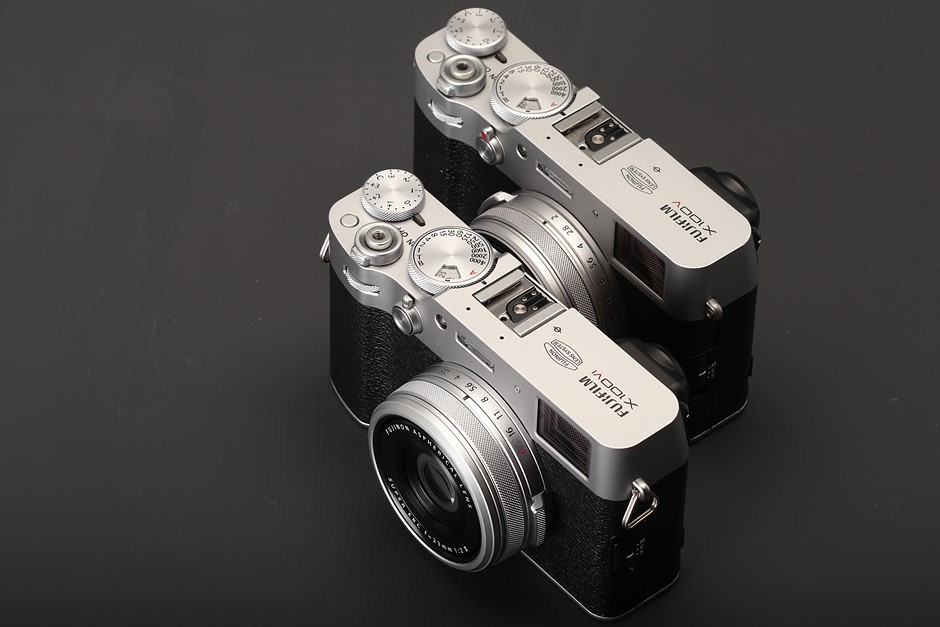
Photo: Richard Butler
Today in Japan, Fujifilm announced the X100VI, the long-awaited successor to the virally popular X100V that has been almost impossible to buy at retail for the better part of several years. Whether you managed to snag an X100V before it became so hard to come by or were stuck hoping to find a reasonably-priced one on the used market, the X100VI absolutely changes the calculus.
Buy now:
Does the X100VI have a better sensor than the X100V?
The X100V has a 26MP X-Trans APS-C sensor it shares with the X-T4 and X-S20 as well as both cameras’ previous versions. We found the sensor’s image quality impressive (especially in low-light) when it turned up in the X-T3 and we liked the sharpening and color profile of the X100V’s JPEG engine.
But the X100VI ups the ante with the 40MP BSI CMOS sensor found in Fujifilm’s X-T5 and X-H2 which captures an impressive amount of detail for an APS-C camera. It’s higher resolution and arguably better for stills but it’s worse for video.
Does the X100VI have a better lens than the X100V?
No. While the internals of the X100VI have changed over its predecessor, the glass is the same. The X100V’s 23mm F2 pancake was redesigned from its forebear, the 2017 X100F, adding one more aspherical element a stronger built-in ND filter, and correcting haziness issues that cropped up with that then 7-year-old (and now 13-year-old) design.
The X100VI sports this same improved-for-2020 23mm F2 lens, and that’s not a problem; the improved performance of the X100VI rests on what the new sensor is able to pull out of that same great lens.
Does the X100VI have in-body image stabilization?
Yes. One of the biggest quality-of-life improvements the X100VI offers is 6.0EV of correction (but only 5.5EV if you’re using the hybrid viewfinder in optical mode. The X100V, by contrast, has no IBIS, which makes shooting with low shutter speeds in lower light a dicier proposition. The X100VI’s stabilization also makes it considerably more suitable for video, but that’s not the only reason why.
Is the X100VI better for video than the X100V?
The X100VI is probably better overall, but it’s not clear cut. First, there is the in-body stabilization, but also the X100VI has Fujifilm’s latest and greatest X Processor 5, which brings many of the same video features as the X-T5. That includes 10-bit recording, 6.2K capture from a 1.23x (43mm equiv) cropped region, and sub-sampled 4K at up to 30p from the sensor’s full with or at up to 60p with a 1.14x crop. That, plus machine learning-trained subject recognition AF. It also has tap-to-track AF in video and the ability to track non-recognized subjects.
The X100V is limited to 8-bit 4:2:0 files without an external recorder, and the lack of stabilization makes it less-than-practical as a first resort for recording video unless you’ve got a gimbal on hand. But it can also shoot oversampled 4K from its full width with less rolling shutter.
Does the X100VI look different than the X100V?
No. The easiest way to tell them apart is to look at where the model number is printed. There are a few differences, technically. The X100VI is 2mm deeper and 43g heavier, but we found it hard to notice the difference even when they were sitting right next to each other. If you see them weeks, days, or even minutes apart, you will have a very difficult time noticing any difference.
Should you upgrade to the X100VI from the X100V?
As always, the answer is conditional. The addition of in-body stabilization is probably the biggest quality of life improvement, which will make the X100VI much more practical for low-light shooting, so if that’s a major element of your craft and you’ve found the X100V lacking, the X100VI will be sizable step up. There is also, of course, the increased resolution of the sensor if the X100V’s has left you wanting.
Otherwise, there are a lot of other creature comforts – a screen with slightly more articulation, subject recognition AF – none of which are revelatory enough to recommend an upgrade on their own, but which can help you justify your decision.
Is the X100V still worth buying?
It depends in part how the used market shakes out over the next days and weeks. For the past few months, X100Vs have been selling on eBay for as much as $2,000, well in excess of both the X100V’s $1,399 list price and the new X100VI’s $1,599 price tag. That overheated market is destined to cool. If you have an X100V, the best time to sell was yesterday. If you’re in the market, the best bet is to wait.
While the X100VI is a plainly superior camera, the X100V isn’t suddenly prehistoric. Its excellent lens and still-capable sensor remain a terrific pair. And its retro-vibe that remains basically unchanged with the X100VI means you’ll look just as cool out on the street.
But if the waiting game isn’t your speed and you’ve got a few hundred extra bucks to spare, the X100VI has one objectively unbeatable advantage: you can go pre-order it new right now.
Buy now:






